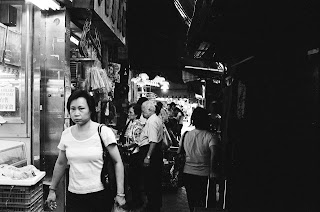












Sometimes it’s the way the crowd flows, sometimes it’s a hidden glance, or a color, or feeling, or moment. Out on the streets all the information is there – a thousand times all the great artworks – richness, emptiness, movement, stillness, beauty – beauty frozen by the most perfect compositions, impossible compositions. It passes by me over and over again, in different forms and ways, ways I couldn’t have imagined. It passes by with the ease of itself: the greatest designers and artists have always strived for it – and in their best works they find it, or a closeness to it.
When I am present on the streets I cannot move my camera fast enough, the moments are gone. I start chancing the photos, shooting at random, on the in-between moments, the valleys between the peaks, the emptiness. For each moment of perfection there are hundreds, maybe thousands, of imbalance, I don’t count them. I wait, I wait, looking… there. and there. I’ve learned that when I point I should snap instantly, that my eye and hand are truer than my mind, faster, but it’s still hard to do. I am learning to trust my hand; trust is difficult.
‘My hand learned from my eyes,
my eyes learned from my heart,
and my heart learned from the Hua Mountain.’
- unknown ancient Chinese artist
I’m shooting 35mm film. I have to wait days for developing. When I pick them up I am excited like a child. I flash through them, so many are nothing, they missed, then I stop – I look twice and my eye begins to move over the image wanting to leave but stays. It doesn’t mean the image is beautiful or whole, is as perfect as what is out there, but it has some thing.
Hugh Wilson is taking a break in Hong Kong after 3 months painting on a remote pacific island. He paints entirely from life. www.hugh-wilson.com




















































